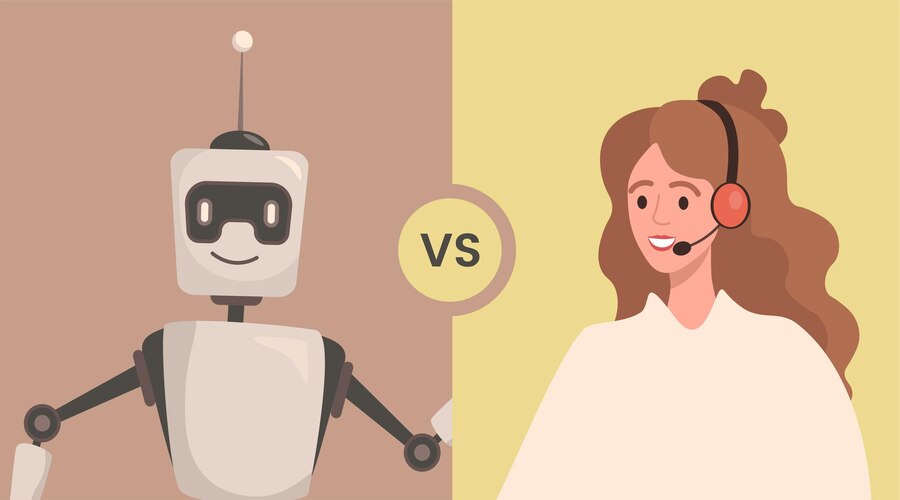

By Larry Carr
May 19, 2023
With the widespread adoption of electronic health records physicians are spending over half of their workday performing EHR-related tasks often at the expense of time that could be otherwise spent on patient care. This situation sparked an interest in the development of a technological solution to automate the clinical documentation process. Thus AI scribes were born. An AI-powered medical scribe listens to physician-patient encounters in real-time and automatically generates medical notes. The question is, do they capture accurately and record clinically relevant information as human scribes do? No, not all, machine-generated notes lack accuracy, relevance, completeness and comprehensibility. Let us in this blog post discuss how human scribes excel and AI scribes fail when it comes to accurate documentation.
AI scribes fail to understand non-lexical sounds
A study found that AI scribes are still missing the ‘mm-hm’, ‘uh-huh’ and other non-lexical conversational sounds while transcribing physician-patient conversations which are vital to ensuring accuracy of medical notes. These are not insignificant specifics. The difference between “uh-huh” and “uh-uh” is subtle, yet crucial in a clinical context, especially when taking a medical history. However, an AI-powered scribe is not particularly good at differentiating them. Missing out on these details can lead to serious consequences in patient care, like mix-ups in medical billing to prescriptions for the wrong medications and much more.
AI scribes fail to catch backtracking in conversation
Physicians also backtrack in conversation, either to clarify their points or recall fresh details. For AI scribes this poses a big problem. For example a physician may ask if the patient has a particular medication or not. The patient may say, Yes, I have it” and then a second later may say “No, I actually don’t have it”. It is important to figure out what exactly needs to be documented. An AI scribe can in no way decipher the actual accurate information that needs to be documented under such a situation. Such backtracking is so natural in human conversations and human scribes never fail to notice it and document the same correctly.
AI scribes are not good at understanding complex clinical conversations
In the case of too many speakers in the exam room it is difficult to trust a machine-generated document. An AI scribe cannot understand the complex medical conversations between various persons that are present in the exam room - doctor, patient, family, nursing staff, and more. By the word “understand” it means to have a human level of comprehension and interpretation of the conversation for medical relevance. The following are other examples of where a human scribe excels and an AI scribe fails
1. Make a value judgment. Choosing between clinically important conversations versus idle conversations. ‘I experienced a pain in my heart when the Charges moved to LA’.
2. Identify sarcasm. This happens when doctors ask severely intoxicated patients if they’ve been drinking for a while and they just murmur, ‘May be just a little’.
3. Differentiate between figurative and literal language. When a patient says, “Every time I turn in my bed I feel a knife stab in the right upper side of my stomach”. The documenting entity has to understand that by ‘knife stab” the patient means sharp pain and by “stomach” the patient means the abdomen.
The above three are just a fraction of the complexities of the patient dialogs that an AI scribe is utterly incapable of understanding and only a human scribe can.
AI scribes lack contextual interpretation and accurate summarization
The type of language that physicians use is often vague with ambiguous phrases and expressions. They frequently jump from topic to topic and change the subject only to return to it a moment later. Human scribes can interpret the context but unfortunately it is a challenging task for AI scribes. Moreover, the ultimate goal of an AI scribe is to summarize medical conversations into a structured format. With no contextual interpretation accurate summarization is not achievable. Moreover, physicians think aloud as they weigh various options and scenarios. Additional information provided by the patient may cause physicians to rethink their opinion or refute an earlier conclusion or decision. It will be difficult for an AI scribe to compile a coherent summary of clinical conversations. Only a human scribe can handle the complex nature of clinical conversations and provide accurate notes.
The upshot
AI scribes can omit critical information or rather be not smart enough to know what is important to pull out into the notes. So, to sum up, though an AI scribe shows promise as a documentation tool it still struggles to get it right. However, human scribes are specifically trained for medical documentation and possess the unique skillset that enables them to take more accurate and detailed notes.
If you are looking for high quality virtual medical scribes get in touch with Scribe4Me today. Our scribes can provide accurate and detailed documentation of patient visits critical to delivering high-quality care. To learn more give us a call at (908)736-4180.

Please fill out this form.
We will reach out to you within 24 hours
Documentation is an important daily clinical responsibility. In order to optimize patient care, physicians are always on the lookout for new ways to effectively and efficiently document patient visits.
The use of virtual medical scribes has become increasingly popular in the recent years, as medical practices across the country are on the constant lookout for ways to reduce clinical documentation overload, thereby improving overall productivity.
The clerical burden associated with EHR usage is attributed as the number one cause of physician burnout. We also know that physicians spend twice as much time on EHRs and other clerical tasks compared to the time providing patient care.